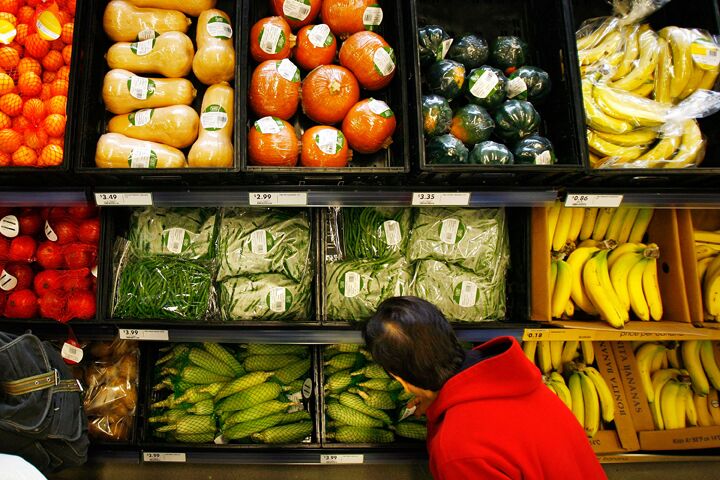
Costing More to Eat Healthy
The epidemic is well-known, the statistics are readily available, and the afflicted are everywhere. Americans are increasingly obese. About two thirds of adults in the United States are overweight, and almost one third are obese.
Contributing factors to the epidemic include the sedentary nature of many jobs, fast-paced lifestyles more conducive to greasy fast food instead of more time-consuming, more nutritious home-cooked meals, and too little time spent exercising.
In addition, healthy foods are becoming more expensive.
According to a new study conducted in Seattle, the price of fruit and vegetables is climbing faster than inflation, while junk food is getting cheaper.
One might expect high-calorie processed foods such as potato chips and candy bars to be more expensive than unprocessed foods like green vegetables, tomatoes and berries, since processed foods like potato chips, for example, include not only the potatoes, but also additional processing, packaging, seasoning and marketing.
However, of the 372 foods and beverages examined at Seattle supermarket chains in 2004 and 2006, researchers found that, calorie for calorie, “nutrient-rich foods—mainly fruits and vegetables—were far more expensive … than sweets and snack foods” (Australian,January 3).
Over this time period, the average price for low-calorie, healthy foods increased approximately 20 percent, while the price of calorie-laden foods actually fell 2 percent. The findings were published in the Journal of the American Dietetic Association and are said to represent a key obstacle to healthy eating, especially for the poor.
Despite many sources describing the benefits of nutrient-rich and healthy foods, most Americans continue to consume a high proportion of unhealthful, calorie-laden filler foods. For example, government data reveals that sweetened soft drinks make up about 10 percent of calories in the typical American diet.
As long as the gap between retail prices for healthful and unhealthful food remains, more Americans will likely continue to maintain an unhealthy diet and experience the associated negative health consequences. Sadly, low-income households, which are least able to absorb the 20 percent jump in nutrient-rich, healthy foods, will be pressured to further rely on cheap junk food for an increasing portion of their diets.
Of course, in many cases, education on good nutrition, healthy lifestlye choices and the self-discipline to follow through are also woefully lacking.
For a more detailed review of what can be done about the national health crisis in the U.S. and other developed nations, read “America’s War With Obesity.”
